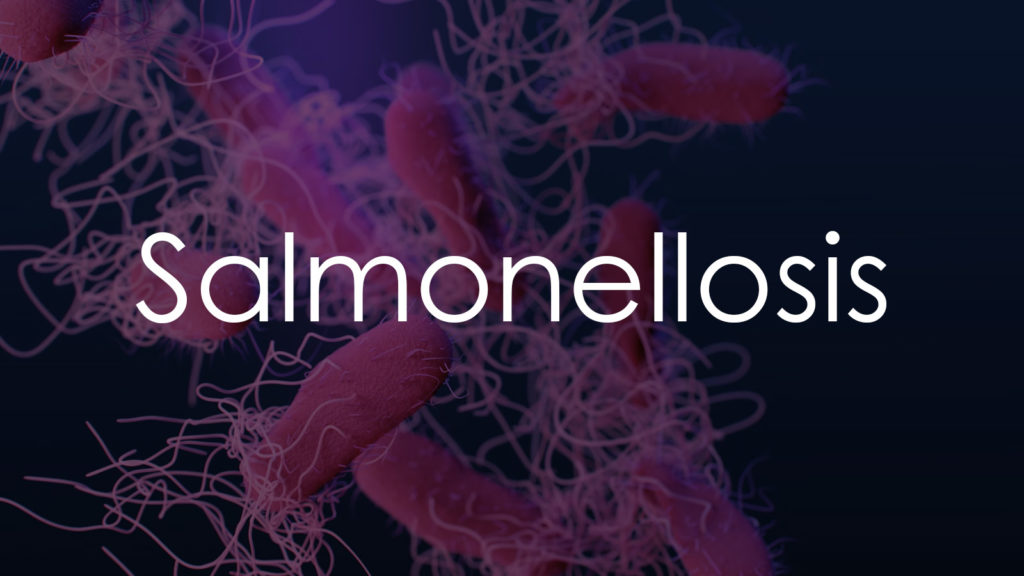Salmonellosis, a common bacterial infection caused by the Salmonella bacteria, poses significant public health challenges worldwide. Characterized by symptoms such as diarrhea, abdominal cramps, and fever, this infection primarily spreads through contaminated food and water, and close contact with infected animals. This article provides a comprehensive overview of salmonellosis, delving into its causes, transmission routes, symptomatology, diagnostic methods, treatment approaches, and prevention strategies. Understanding the prevalence and impact of salmonellosis is crucial in mitigating its spread and ensuring effective management.

Causes
Salmonellosis is primarily caused by the Salmonella bacteria, which encompass a diverse group of organisms capable of causing illness in humans.
- Salmonella Bacteria: There are many types of Salmonella, but two species, Salmonella enterica and Salmonella bongori, are predominantly responsible for human infections. Within these species, numerous serotypes can cause illness, with some specific to certain animals or food types.
- Common Sources: Salmonella infection often stems from contaminated food or water. Common sources include undercooked poultry, eggs, unpasteurized milk and dairy products, and sometimes fruits and vegetables.
- Animal Contact: Direct contact with certain animals, particularly reptiles, poultry, and livestock, can also lead to salmonellosis. Pets like turtles, snakes, and chicks are common carriers.
- Transmission Routes: The bacteria typically enter the body through the mouth. Ingesting even a small number of bacteria can cause illness, which spreads through the fecal-oral route. Poor kitchen hygiene, cross-contamination during food preparation, and inadequate cooking are key factors in transmission.
Symptoms
The symptoms of salmonellosis can vary but generally include a combination of gastrointestinal issues.
- Gastrointestinal Symptoms: The most common symptoms are diarrhea, abdominal cramps, and fever. The onset of symptoms usually occurs 6 hours to 6 days after infection and can last 4 to 7 days.
- Severity and Duration: While most people recover without specific treatment, some cases may be severe and life-threatening, especially in young children, the elderly, and those with compromised immune systems.
- Vomiting and Nausea: These symptoms are also commonly associated with salmonellosis, contributing to the risk of dehydration.
- Asymptomatic Cases: Some individuals infected with Salmonella may not show any symptoms but can still spread the bacteria to others.
- Potential Complications: In severe cases, the infection may spread from the intestines to the bloodstream and other body sites, leading to more serious health problems if not treated promptly.
Diagnosis
Effective diagnosis of salmonellosis is crucial for appropriate treatment and limiting the spread of the infection.
- Stool Sample Testing: The primary method for diagnosing salmonellosis is by testing a stool sample. This test identifies the presence of Salmonella bacteria.
- Blood Tests: In more severe cases, especially where bloodstream infection is suspected, blood tests may be conducted.
- Challenges in Diagnosis: Distinguishing salmonellosis from other gastrointestinal disorders can be challenging due to similar symptoms. Accurate and timely diagnosis is essential for effective treatment.
Treatment
Treatment for salmonellosis primarily focuses on symptom management and preventing dehydration.
- Hydration: The main treatment for salmonellosis is rehydration, either orally or intravenously, to replace fluids lost through diarrhea and vomiting.
- Antibiotics: While antibiotics are not always necessary, they may be prescribed in severe cases or for certain vulnerable populations. The use of antibiotics can shorten the duration of symptoms and reduce the infectiousness of the disease.
- Complications and Antibiotic Resistance: In cases of antibiotic-resistant Salmonella or complications like bloodstream infections, more intensive antibiotic therapy may be required.
Prevention
Preventing salmonellosis involves a combination of personal hygiene, food safety, and public health measures.
- Safe Food Handling Practices: Properly cooking food, especially poultry and eggs, and avoiding cross-contamination are crucial steps in preventing salmonellosis.
- Hygiene: Regular handwashing, particularly after handling raw food, using the bathroom, or contact with animals, is essential in preventing the spread of Salmonella.
- Animal Contact Precautions: Exercise caution when handling reptiles, birds, and other animals that can carry Salmonella. This is especially important for children and immunocompromised individuals.
- Public Health Strategies: Public health initiatives like surveillance of foodborne illnesses, education campaigns about food safety, and regulation of food industries play a vital role in preventing salmonellosis outbreaks.
Conclusion
In summary, salmonellosis is a prevalent bacterial infection that requires concerted efforts for effective management and prevention. While typically self-limiting, it can pose serious health risks, particularly in vulnerable populations. Key to controlling this infection are measures such as safe food handling practices, maintaining good hygiene, and public health education. Furthermore, understanding when to seek medical intervention and adhering to treatment protocols are vital in managing salmonellosis. The global challenge posed by salmonellosis underscores the importance of continuous vigilance, research, and public health initiatives to reduce its incidence and impact on communities worldwide.